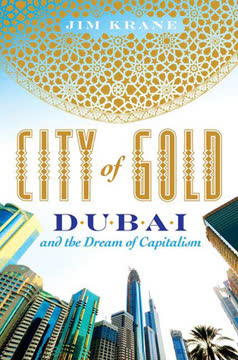Key Takeaways
1. From Obscurity to Ambition: Dubai's Humble Beginnings
"No one thought the village would become a city. It sat on the edge of a vast desert, surrounded by a sea of sand."
A forsaken land. For centuries, Dubai was an isolated, impoverished mud village on the Arabian Peninsula, a sun-hammered land with no rivers and treacherous coastlines. Its population remained stagnant for over a millennium, with inhabitants eking out a living through fishing, pearl diving, and nomadic herding. This harsh environment meant few outsiders desired the land, granting its inhabitants "the safety of the undesired."
Maktoum's bold gamble. The village's destiny shifted in 1833 when the Al Bu Falasah clan, led by Sheikh Maktoum bin Buti, fled a tribal dispute in Abu Dhabi and seized control of Dubai. This audacious move, nearly doubling the village's population, marked the beginning of the Maktoum dynasty's 175-year rule and their "knack for bold decisions." Early on, Dubai leveraged its strategic creek, becoming a free port by 1900, attracting merchants from Iran by abolishing customs duties and offering incentives like free land.
Boom and devastating bust. The pearl industry fueled Dubai's growth, becoming 95% of the Gulf economy by the early 1900s. However, this monoculture proved disastrous when the 1929 Great Depression decimated demand and Japanese cultured pearls flooded the market. The ensuing famine forced Dubaians to eat locusts and lizards, highlighting the fragility of an economy dependent on a single luxury export. This period of hardship underscored the need for diversification, a lesson Dubai's future leaders would take to heart.
2. Sheikh Rashid's Visionary Gambles: Building the Foundations
"Rashid wanted the name of his town, Dubai, on the lips of every person on earth."
A new era of leadership. Sheikh Rashid bin Saeed al-Maktoum, who officially took power in 1958, inherited a city still largely primitive, lacking basic infrastructure like electricity, running water, or paved roads. Unlike his easygoing father, Saeed, Rashid was a "relentless optimist" with a clear vision: transform Dubai into a globally recognized, luxurious city. He disdained stagnation and possessed a "punishing work ethic" that would drive unprecedented modernization.
Infrastructure as investment. Rashid's first major gamble was dredging the Dubai Creek in 1959, a project costing £600,000 (about $3 million) – years of Dubai's total economic output. This audacious move, financed by special taxes, bonds, and a loan from Kuwait, transformed the shallow waterway into a vital port capable of handling large cargo ships, catapulting Dubai into commercial leadership of the lower Gulf. He then rapidly introduced electricity, telephones, and a bridge, often funded by strategic alliances like the dowry from Qatar's emir.
Mega-projects and defiance. Even after Dubai struck oil in 1966 (a modest 4% of UAE reserves), Rashid continued his "steel-gut gambles" on massive infrastructure projects, often against the advice of British consultants. He expanded Port Rashid from 4 to 35 berths, built the colossal Dubai Dry Docks, the iconic World Trade Centre, and the immense Jebel Ali Port – the world's largest man-made harbor. These investments, initially criticized as "edifice complexes," diversified Dubai's economy, turning its small oil wealth into a foundation for future growth and setting it apart from its oil-rich neighbors who merely subsidized lifestyles.
3. The UAE's Unlikely Birth: Zayed's Nation-Building
"In this world, a man with unlimited charisma and unlimited cash can go a long way."
A fragile independence. In 1971, as the British Empire retreated, the seven Trucial States faced an uncertain future. Lacking central governance, infrastructure, and a unified identity, they were widely expected to be subsumed by larger neighbors like Saudi Arabia or Iran. Indeed, Iran seized three islands on the eve of independence, highlighting the new nation's vulnerability. This precarious situation underscored the urgent need for strong, unifying leadership.
Zayed's unifying vision. Sheikh Zayed bin Sultan al-Nahyan of Abu Dhabi, a "true Bedouin chief" with "unlimited charisma and unlimited cash," emerged as the architect of the United Arab Emirates. Despite his uneducated background, Zayed possessed remarkable foresight and generosity. His first act as Abu Dhabi's ruler in 1966 was to open the palace coffers, inviting anyone in the Trucial States to receive cash handouts. This "big giveaway" fostered loyalty and helped weld disparate sheikhdoms into a cohesive nation, positioning Zayed as the revered "father of his country."
Modernization and stability. Zayed systematically built Abu Dhabi's modern state from scratch, investing oil wealth in roads, schools, hospitals, and a planned city grid. As UAE President, he extended this formula of "tribal generosity" across the emirates, providing citizens with free land, housing, education, and healthcare. This "best subsidized welfare system on earth" effectively neutralized political opposition and ensured stability, confounding Western political scientists who predicted the downfall of Gulf monarchies.
4. Sheikh Mohammed's Era: The Race for Global Dominance
"Turning Dubai into a vacation destination was the first step in the second phase of Dubai’s development, a phase that Sheikh Mohammed led."
From ridicule to tourism titan. In the mid-1980s, Sheikh Mohammed bin Rashid al-Maktoum, then crown prince, faced ridicule for suggesting Dubai become a tourist destination, with critics pointing to its "humidity, red-hot sun, burning sand and barren desert!" Undeterred, Mohammed leveraged Dubai's guaranteed sunshine, fantastic beaches, and pragmatic alcohol policies. He upgraded the airport, implemented an "open skies" policy, and, crucially, launched Emirates airline in 1985, transforming Dubai into a global aviation hub.
Iconic architecture and global branding. Mohammed's ambition extended to creating instantly recognizable landmarks. He commissioned the Burj Al Arab, a sail-shaped hotel designed to be "the most interesting" building in the world, not necessarily the tallest. This "Tower of the Arabs" became a global icon, cementing Dubai's skyline and attracting high-spending tourists. The city's tourism sector exploded, growing from 400,000 visitors in 1985 to 7.3 million in 2008, making it a "Mecca for Western tourists" in the heart of Arabia.
Post-9/11 boom and free zones. The 9/11 attacks inadvertently fueled Dubai's growth, as Arab investors repatriated tens of billions from the U.S., seeking safer havens in the Gulf. Dubai capitalized on this influx, experiencing scorching 13% annual growth between 2000 and 2005. Sheikh Mohammed pioneered "free zones" like Dubai Internet City and Media City, offering tax exemptions, 100% foreign ownership, and unlimited visas. These "designer industries" attracted global tech and media giants, injecting productivity and skills into the economy and establishing Dubai as a regional business hub.
5. The Real Estate Extravaganza: Islands and Supertowers
"He decreed that foreigners could buy homes."
Unleashing a typhoon of demand. In 2002, Sheikh Mohammed made a "single most momentous decision" by allowing foreigners to buy real estate, transforming Dubai into the only place in the Gulf where expatriates could own property. This unleashed a "typhoon of pent-up demand," attracting investors and professionals from around the world. The city rapidly became a giant construction site, with bulldozers flattening deserts and cranes dominating the skyline, earning Dubai the moniker "world's largest repository of building cranes."
Man-made marvels. The real estate boom was characterized by audacious, often outlandish, projects. Nakheel, a state-owned developer, built the Palm Jumeirah, a palm-shaped artificial island with 48 miles of new shoreline, sold out in three days – while still open sea. This was followed by the even larger Palm Jebel Ali and the Manhattan-sized Palm Deira, along with "The World," an archipelago of 300 islands shaped like a global map. These projects, initially dismissed as folly, created billions in assets and cemented Dubai's reputation for pushing the "outer borders of the possible."
The Burj Dubai: A half-mile to the sky. The centerpiece of this boom was the Burj Dubai (now Burj Khalifa), conceived as the world's tallest building. Rising over 2,684 feet, this "Mars rocket" of glass and steel became the tallest man-made structure on the planet, built at a frantic pace of a story every three days. The Burj, along with surrounding mega-malls and luxury developments, symbolized Dubai's relentless pursuit of superlatives. This era of "unbridled capitalism" and speculative investment, however, also sowed the seeds for future economic vulnerability.
6. The Human Cost: Labor Exploitation and Social Stratification
"They are like candles burning and melting to light others."
The invisible workforce. Dubai's glittering skyline and luxurious lifestyle are built on the backs of a vast, largely invisible workforce of migrant laborers, predominantly from India, Pakistan, and Bangladesh. These men, numbering over 1.5 million, toil in "difficult and dangerous conditions" for meager wages, often working 60-hour weeks in extreme heat. They live in "hard-scrabble labor camps" like Sonapur ("City of Gold"), hidden from the city's opulence, sending nearly all their earnings home to support their families.
Exploitation and neglect. Many laborers fall into a "debt trap," paying exorbitant fees to recruiting agents in their home countries, only to arrive in Dubai to find lower-than-promised salaries. This debt bondage, coupled with companies often withholding passports, leaves them in a vulnerable, "slavelike" state. Hundreds die on construction sites annually due to lax safety standards and inadequate training, with falls being the leading cause. The government's response to these issues has been slow, often prioritizing economic growth over worker welfare.
Sex trafficking and social ills. Dubai's male-dominated demographic (over 75% male) and "atmosphere of tolerance" have also made it a hub for prostitution and human trafficking. Women from Eastern Europe, Asia, and Africa are lured with false promises of jobs, only to have their passports confiscated and forced into sex work to repay fabricated debts. While the UAE passed an anti-trafficking law in 2006, enforcement remains weak, and victims often face legal repercussions themselves, highlighting the "shattered lives" beneath Dubai's glamorous facade.
7. Environmental Recklessness: The Air-Conditioned Nightmare
"If every person in the world devoured as much as those in the UAE and the United States, four and a half planets would be needed to provide the resources."
World's largest ecological footprint. Dubai's rapid development has come at a severe environmental cost, transforming a once-sustainable society into the world's most rapacious consumer of energy and producer of greenhouse gases. By 2006, UAE residents had the largest "ecological footprint" globally, surpassing even Americans, driven by a culture of huge air-conditioned houses, monster 4x4s, and a disdain for public transport. This unsustainable consumption is exacerbated by the fact that 80% of Dubai's water is desalinated, a process that burns prodigious amounts of fossil fuel.
Monuments to the past. Dubai's urban planning, characterized by energy-inefficient glass skyscrapers and sprawling suburbs, reflects a "build first, ask questions later" ethos that ignored environmental concerns. Developers, seeing Sheikh Mohammed's personal projects disregard sustainability, followed suit. Critics like Mathis Wackernagel call Dubai's shimmering towers "monuments to the past," destined to be outmoded by rising energy costs. The city's "haste to build and sell" has created a dangerously high demand for electricity, outstripping supply in an energy-rich nation.
A slow awakening. Despite the environmental devastation—including the burial of coral reefs and sea grass beds by man-made islands, and altered Gulf currents—Dubai's leadership has been slow to act. However, a "slow awakening" is occurring. In 2007, Sheikh Mohammed mandated that all new buildings must comply with green standards, a directive among the toughest globally. While neighboring Abu Dhabi is pioneering sustainable cities like Masdar, Dubai faces the immense challenge of retrofitting its existing infrastructure and shifting its consumption habits to ensure long-term viability.
8. The Demographic Dilemma: A Nation Overwhelmed by Foreigners
"Every day when I roam the town I ask myself, ‘Where are my people? Where are the local citizens of my own country? Where are they? I can’t find them.’"
A minority in their own land. Dubai is arguably the world's most cosmopolitan city, with 95% of its 2 million inhabitants being foreigners from 200 countries. This "demographic insanity" has left Emirati citizens a shrinking minority, comprising only about 100,000 people in Dubai and 15% of the UAE's total population. The once-vibrant local culture has been "overwhelmed by a thorough globalization," with Emiratis retreating into walled compounds and becoming increasingly clannish.
Identity crisis and backlash. The "foreigner problem" has sparked a bold national debate and an anti-immigration backlash among Emiratis, who view it as a "national security crisis." Dubai's police chief, General Dhahi Khalfan, warned that "unless drastic action is taken we will disappear in the waves of foreign workers." The strict citizenship laws, which deny nationality to even long-term residents and children of Emirati women married to foreigners, exacerbate the issue, leading to fears that international law could eventually grant citizenship rights to these "second-class residents."
The "spoiled child" paradox. While Emiratis enjoy immense privileges—free land, subsidized utilities, education, and high-paying government jobs—this "unwritten tribal bargain" has fostered a "privileged attitude" and a lack of incentive to work in the private sector. This has created a paradox where a wealthy populace feels marginalized and disoriented in their own rapidly changing country. The economic slowdown, however, offers a potential "blessing," as thousands of foreigners leave, providing an opportunity to rebalance the demographics and reassess the long-term sustainability of Dubai's growth model.
9. Navigating Geopolitical Tensions: Between America and Iran
"Dubai is the most important city on earth to the Islamic Republic of Iran, with the exception of Tehran."
A delicate balancing act. Dubai finds itself in a precarious geopolitical position, caught between its vital economic ties with Iran and its crucial security alliance with the United States. While the U.S. views the UAE as an anti-Iran model and a key counter-terrorism ally, Iran sees Dubai as its "lifeline to the world," a crucial hub for trade and capital flight, especially under international sanctions. This "dueling for Dubai's loyalty" forces the emirate to walk a diplomatic tightrope, maintaining pragmatic relations with both sworn enemies.
Iran's indispensable window. Dubai's historical ties with Iran, dating back centuries, have been a consistent source of prosperity. Iranian merchants, fleeing political and economic instability, have continuously flocked to Dubai, establishing thousands of businesses and investing billions. This relationship, which allows Iran to bypass sanctions and access global markets, is one Dubai is unwilling to sever, despite intense U.S. pressure. The UAE's "vaunted neutrality" is often tested, as it quietly implements some U.S.-driven restrictions while publicly resisting calls for a full embargo.
America's strategic foothold. Conversely, the UAE's defense cooperation agreement with the U.S. is "nothing short of existential," providing protection against larger neighbors. Dubai also serves as a critical U.S. spy center, with its consulate acting as a "lucrative intelligence collection point" for monitoring Iranian activities. While the UAE has publicly forbidden the U.S. from using its territory to attack Iran, its deep military and economic integration with America underscores its reliance on Washington. This complex interplay means Dubai must constantly "finesse" its relationships, prioritizing stability and economic pragmatism over ideological alignment.
10. The Dubai Paradox: Autocracy, Ambition, and the Future
"Dubai forces us to think beyond the rational, to ponder the outer borders of the possible, right where they brush up against the limits of physics."
A city of contradictions. Dubai is a paradox: a "genuine city" yet an "unfinished collection of buildings," a "beacon of peace and prosperity" built on labor exploitation, a "most cosmopolitan" place where locals are a minority. Its governance, a "tribal autocracy" led by Sheikh Mohammed, allows for rapid, decisive action, but stifles political freedom and intellectual debate. This "one-man show" has achieved unprecedented growth, but at the cost of environmental degradation, social stratification, and a fragile, transient population.
The "CEO" and his vision. Sheikh Mohammed, Dubai's "chief architect," operates the city like a corporation, driven by a relentless pursuit of excellence and a desire to make Dubai a global leader in finance, tourism, and innovation. His "electrifying" leadership, characterized by bold gambles, bureaucracy-killing management, and a knack for timing, has transformed a desert outpost into a global brand. He envisions Dubai as a new "Córdoba," a center of learning and tolerance, aiming to drag the Arab world into a renaissance through entrepreneurship and knowledge.
Challenges and reckoning. Despite its astonishing rise, Dubai faces immense challenges. The 2008-2009 recession exposed its economic vulnerabilities, with property prices plummeting and state-owned companies facing massive debt. The city's "bloated" development, demographic imbalance, and lack of political pluralism threaten its long-term sustainability. While Sheikh Mohammed aims to foster an "enlightened society," this requires more freedoms of speech and press, and a more permanent role for expatriates—issues that challenge the very foundations of his autocratic rule. The future of Dubai hinges on whether it can evolve beyond its "fool's gold" era of speculative growth and build a truly sustainable, inclusive, and intellectually vibrant society.
Last updated:
Review Summary
City of Gold offers a comprehensive look at Dubai's history and transformation. Readers praise its balanced approach, detailing both achievements and challenges. The book provides valuable insights into Dubai's rapid development, governance, and social issues. Many found it informative and engaging, particularly the historical sections. Some critiqued its dated information and dry economic focus. Overall, reviewers recommend it for those interested in understanding Dubai's rise, though casual readers may find parts less accessible.
Similar Books
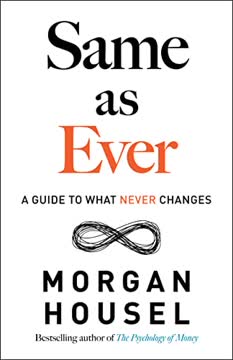
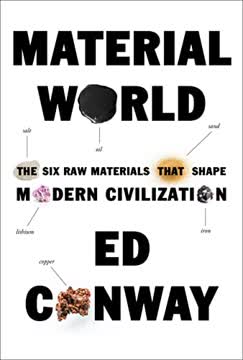
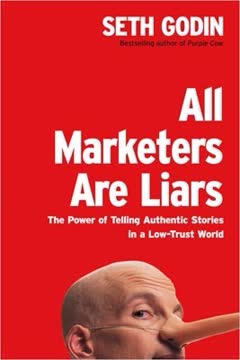
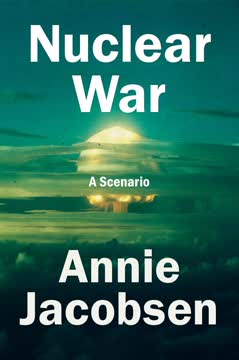
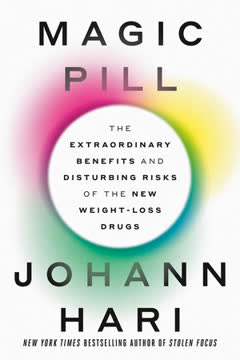
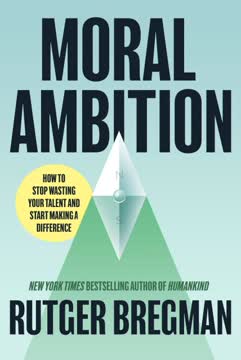
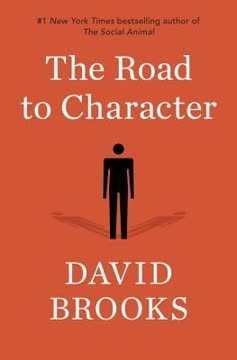
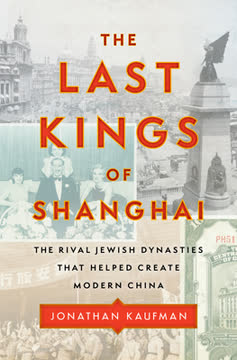
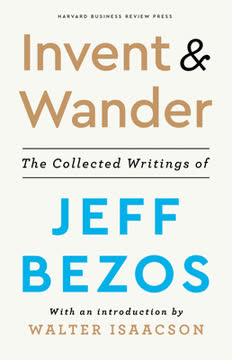
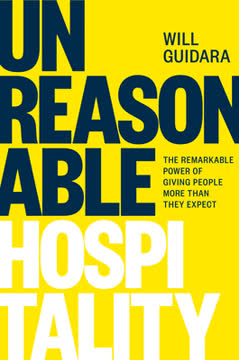
Download PDF
Download EPUB
.epub digital book format is ideal for reading ebooks on phones, tablets, and e-readers.
